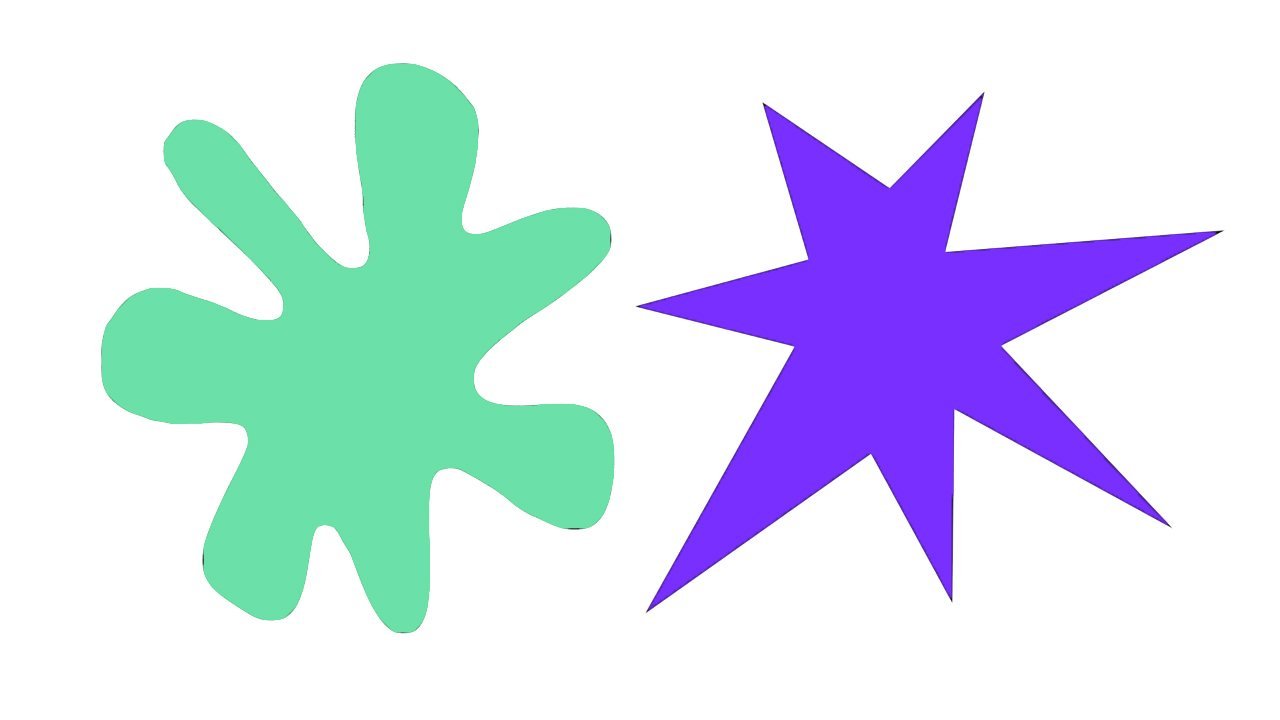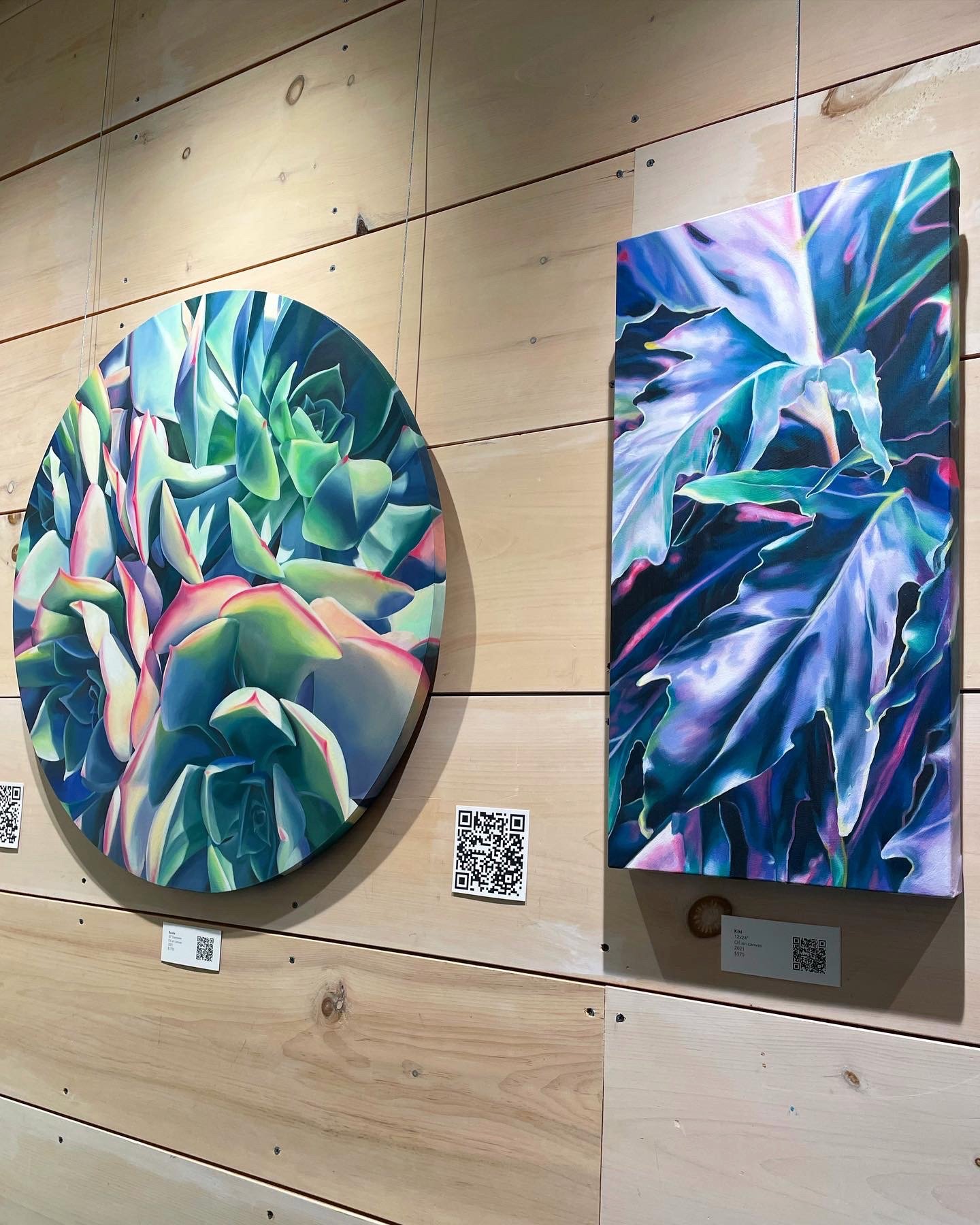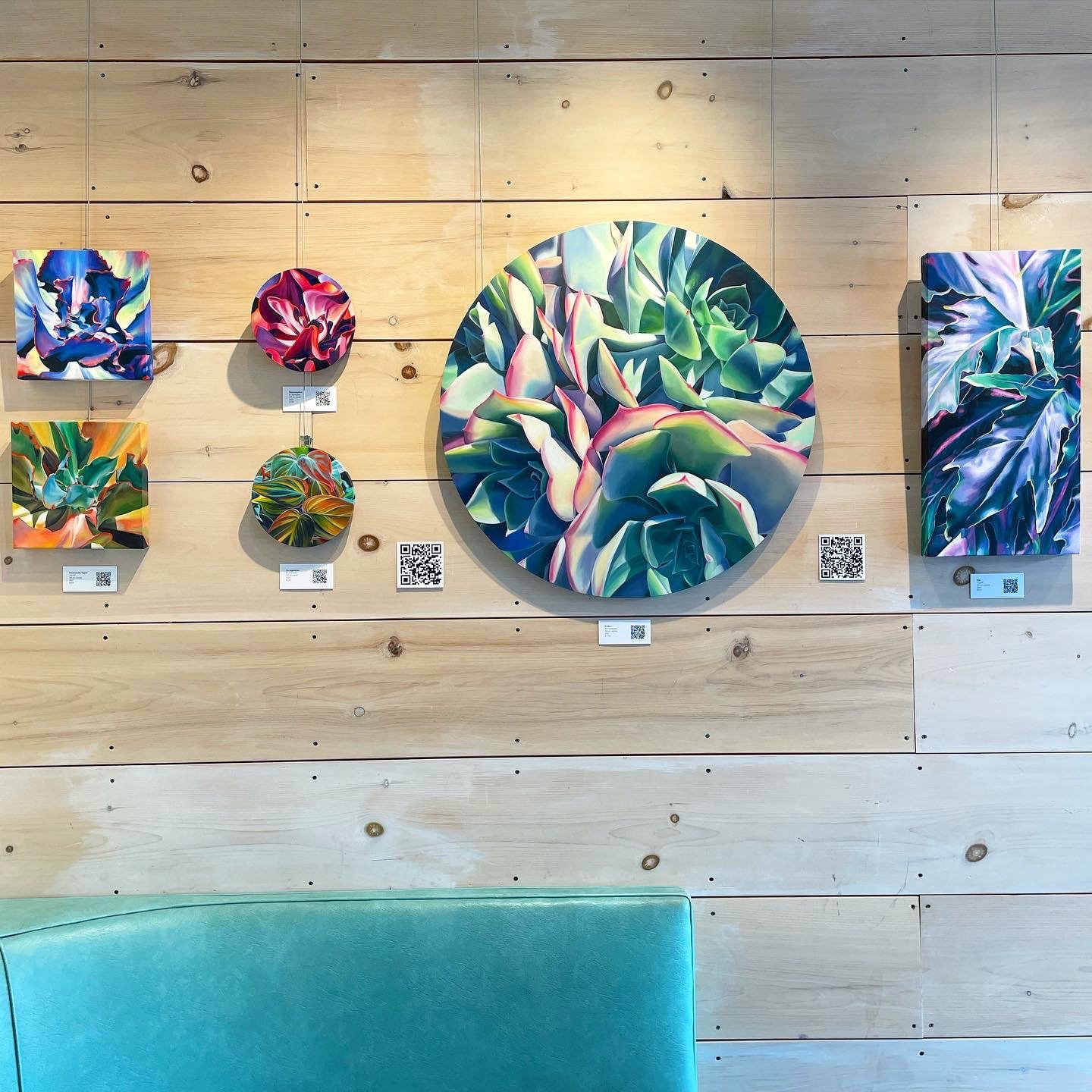"Kiki" - original artwork
Kiki
16x20”
oil on canvas
I have been on a quest to find a magic formula for all human beings to feel better. Broad strokes, generalizations, and then being audacious enough to also push for specifics.
Human minds are, of course, still being studied, and with new technology comes the disparaging of previous research. One of the earlier studies that really caught my attention was first done in 1929 by Wolfgang Köhler, and further studied by V. S. Ramachandran and Edward Hubbard (Ramachandran and Hubbard, 2001) which produced the Bouba-Kiki Effect.
Given the image, above, and asked which shape would be assigned the title of “kiki” and the other, “bouba”. This question was posed to countries all over the world, to multi-lingual adults and also to two-year-olds who hadn’t yet learned language patterns and didn’t speak English. The results found that 98% of people agreed that “bouba” was assigned to the bulbous shape, and “kiki” to the sharper, star-like figure.
“Regardless of language, culture, or alphabet, within seconds of being shown the nonsense symbols, the human hearing centers identify the word “kiki” as having a sharp inflection, that the word “bouba” as being softer and more rounded.” (Emotional Agility, Susan David).
Human brains like sensory associations, which is why we delight in metaphors. We don’t experience thoughts neutrally — thoughts are visual, idiosyncratic, with judgments/inferences, and actions. This way of sensory blending (like using the term “that’s a sharp cheese” to define the hunk of cheddar you’re enjoying, knowing it won’t slice your finger open) has also opened the research up to how language can illicit feelings, as well. If someone sent you a text asking “did you leave the stove on?”, or even reading that in your mind, might actually get your heart rate to spike. We have a tendency to dismiss “woo woo” affirmations, but that felt stress from “did you leave your stove on?” proves how powerful words can be to our nervous system.
This was ground-breaking for the understanding of sound-vision synaesthesia. This also opened the door for further examination of the angular gyrus, an area of the brain that sits at the crossroads of touch, vision and hearing. Bouba and kiki were just the beginning, and with the advancement of neurobiology now there is research into how neurons function together. A new concept known as degeneracy shows that neurons don’t have single set functions, and that many different sets of neurons can produce the same behavior or function. I know, that term “degenerate” (or “degen”) has only ever been casually used to describe someone who’s been deteriorating in all categories: morally, mentally, physically… you get it. This scientific term, though, has been discovered thanks to the newer technological advancements in the field. Increased degeneracy has been found in more complex minds, and complex minds have been shown to recover quicker from trauma - a more complex mind can reconfigure itself! Resiliency! Neurons can do a great many things depending on how a human has developed! Neat!
Kiki
16x20”
oil on canvas
I have been on a quest to find a magic formula for all human beings to feel better. Broad strokes, generalizations, and then being audacious enough to also push for specifics.
Human minds are, of course, still being studied, and with new technology comes the disparaging of previous research. One of the earlier studies that really caught my attention was first done in 1929 by Wolfgang Köhler, and further studied by V. S. Ramachandran and Edward Hubbard (Ramachandran and Hubbard, 2001) which produced the Bouba-Kiki Effect.
Given the image, above, and asked which shape would be assigned the title of “kiki” and the other, “bouba”. This question was posed to countries all over the world, to multi-lingual adults and also to two-year-olds who hadn’t yet learned language patterns and didn’t speak English. The results found that 98% of people agreed that “bouba” was assigned to the bulbous shape, and “kiki” to the sharper, star-like figure.
“Regardless of language, culture, or alphabet, within seconds of being shown the nonsense symbols, the human hearing centers identify the word “kiki” as having a sharp inflection, that the word “bouba” as being softer and more rounded.” (Emotional Agility, Susan David).
Human brains like sensory associations, which is why we delight in metaphors. We don’t experience thoughts neutrally — thoughts are visual, idiosyncratic, with judgments/inferences, and actions. This way of sensory blending (like using the term “that’s a sharp cheese” to define the hunk of cheddar you’re enjoying, knowing it won’t slice your finger open) has also opened the research up to how language can illicit feelings, as well. If someone sent you a text asking “did you leave the stove on?”, or even reading that in your mind, might actually get your heart rate to spike. We have a tendency to dismiss “woo woo” affirmations, but that felt stress from “did you leave your stove on?” proves how powerful words can be to our nervous system.
This was ground-breaking for the understanding of sound-vision synaesthesia. This also opened the door for further examination of the angular gyrus, an area of the brain that sits at the crossroads of touch, vision and hearing. Bouba and kiki were just the beginning, and with the advancement of neurobiology now there is research into how neurons function together. A new concept known as degeneracy shows that neurons don’t have single set functions, and that many different sets of neurons can produce the same behavior or function. I know, that term “degenerate” (or “degen”) has only ever been casually used to describe someone who’s been deteriorating in all categories: morally, mentally, physically… you get it. This scientific term, though, has been discovered thanks to the newer technological advancements in the field. Increased degeneracy has been found in more complex minds, and complex minds have been shown to recover quicker from trauma - a more complex mind can reconfigure itself! Resiliency! Neurons can do a great many things depending on how a human has developed! Neat!
Kiki
16x20”
oil on canvas
I have been on a quest to find a magic formula for all human beings to feel better. Broad strokes, generalizations, and then being audacious enough to also push for specifics.
Human minds are, of course, still being studied, and with new technology comes the disparaging of previous research. One of the earlier studies that really caught my attention was first done in 1929 by Wolfgang Köhler, and further studied by V. S. Ramachandran and Edward Hubbard (Ramachandran and Hubbard, 2001) which produced the Bouba-Kiki Effect.
Given the image, above, and asked which shape would be assigned the title of “kiki” and the other, “bouba”. This question was posed to countries all over the world, to multi-lingual adults and also to two-year-olds who hadn’t yet learned language patterns and didn’t speak English. The results found that 98% of people agreed that “bouba” was assigned to the bulbous shape, and “kiki” to the sharper, star-like figure.
“Regardless of language, culture, or alphabet, within seconds of being shown the nonsense symbols, the human hearing centers identify the word “kiki” as having a sharp inflection, that the word “bouba” as being softer and more rounded.” (Emotional Agility, Susan David).
Human brains like sensory associations, which is why we delight in metaphors. We don’t experience thoughts neutrally — thoughts are visual, idiosyncratic, with judgments/inferences, and actions. This way of sensory blending (like using the term “that’s a sharp cheese” to define the hunk of cheddar you’re enjoying, knowing it won’t slice your finger open) has also opened the research up to how language can illicit feelings, as well. If someone sent you a text asking “did you leave the stove on?”, or even reading that in your mind, might actually get your heart rate to spike. We have a tendency to dismiss “woo woo” affirmations, but that felt stress from “did you leave your stove on?” proves how powerful words can be to our nervous system.
This was ground-breaking for the understanding of sound-vision synaesthesia. This also opened the door for further examination of the angular gyrus, an area of the brain that sits at the crossroads of touch, vision and hearing. Bouba and kiki were just the beginning, and with the advancement of neurobiology now there is research into how neurons function together. A new concept known as degeneracy shows that neurons don’t have single set functions, and that many different sets of neurons can produce the same behavior or function. I know, that term “degenerate” (or “degen”) has only ever been casually used to describe someone who’s been deteriorating in all categories: morally, mentally, physically… you get it. This scientific term, though, has been discovered thanks to the newer technological advancements in the field. Increased degeneracy has been found in more complex minds, and complex minds have been shown to recover quicker from trauma - a more complex mind can reconfigure itself! Resiliency! Neurons can do a great many things depending on how a human has developed! Neat!







